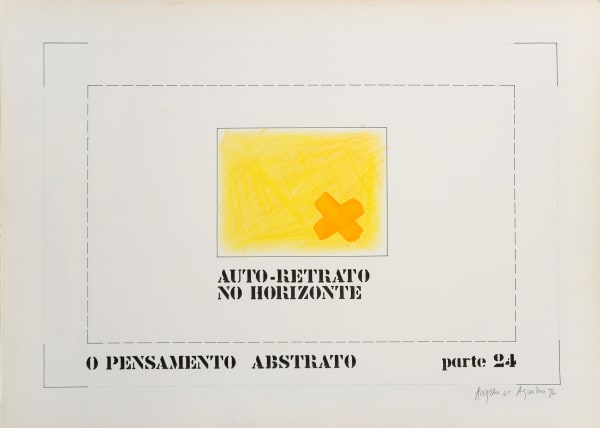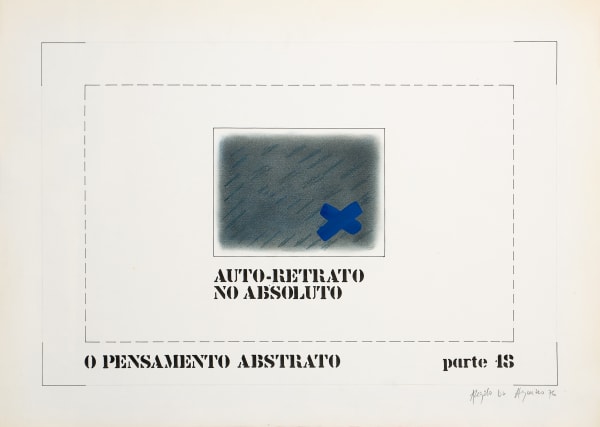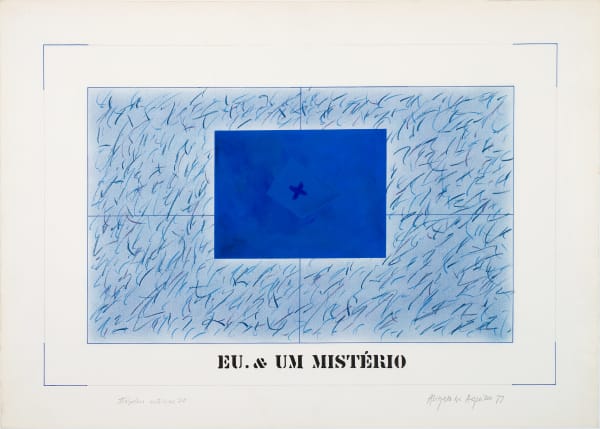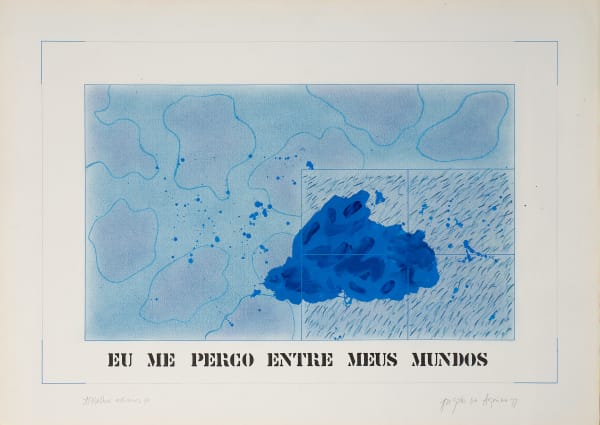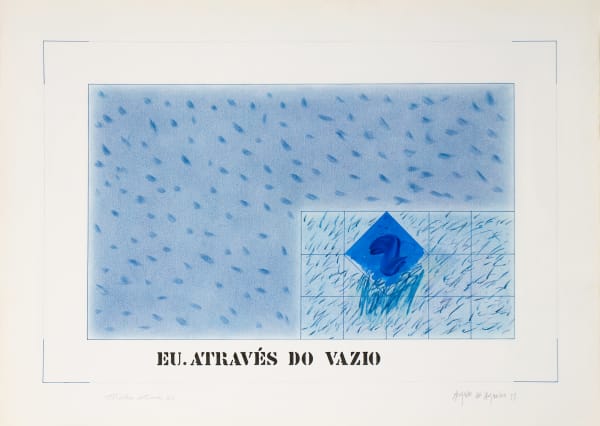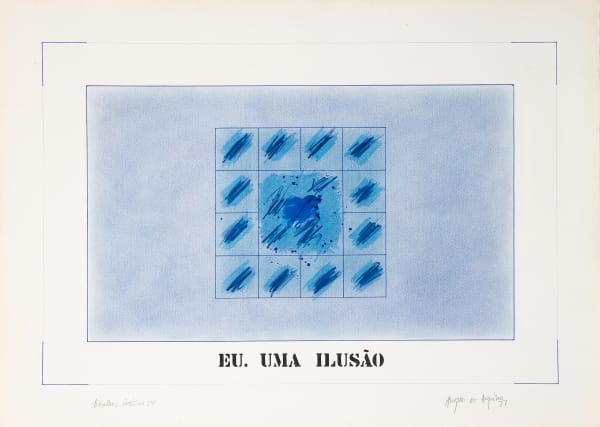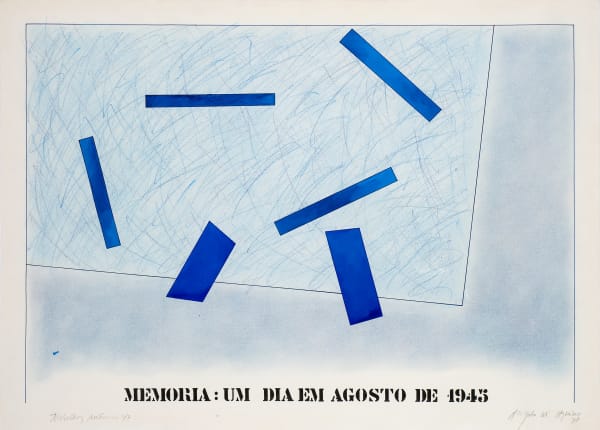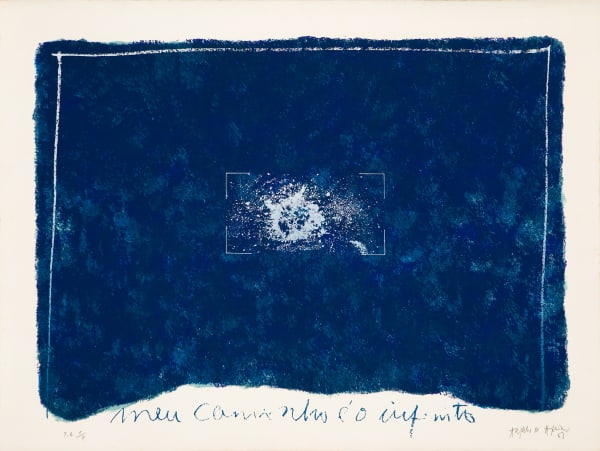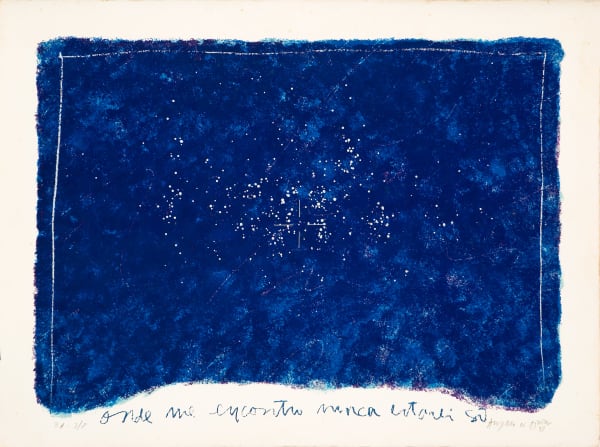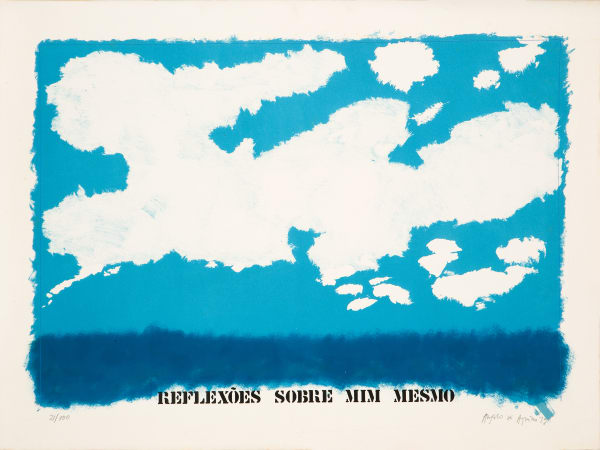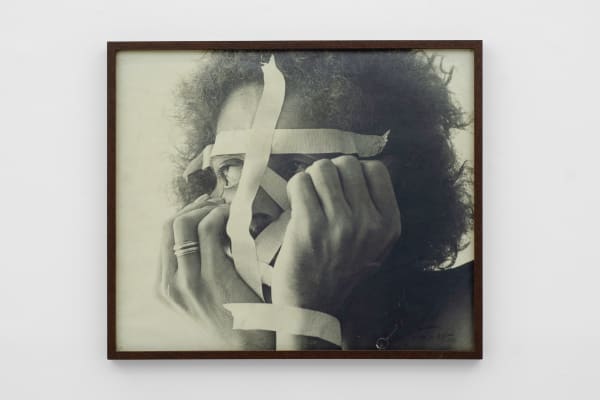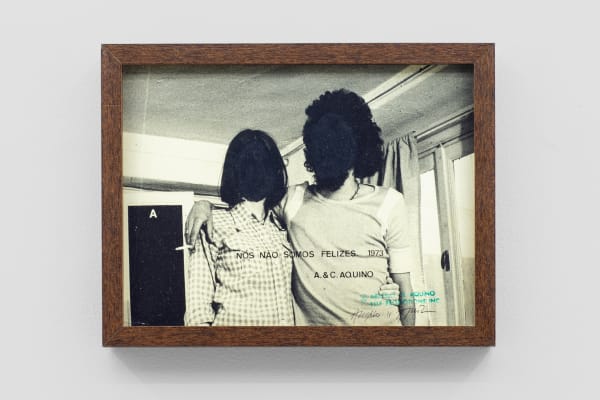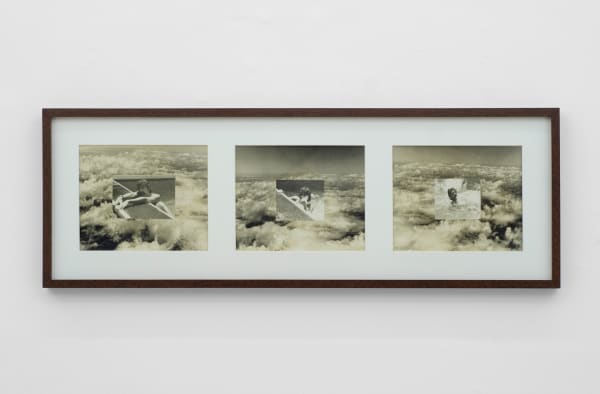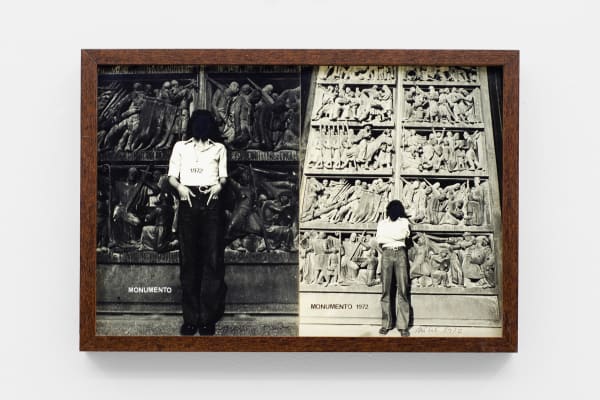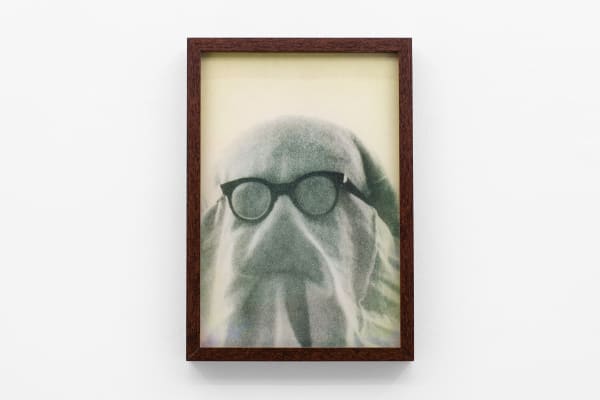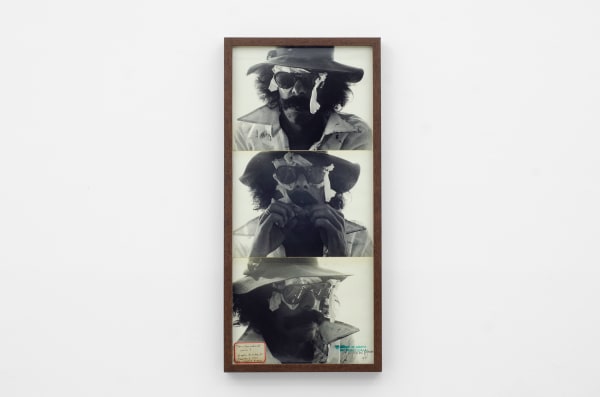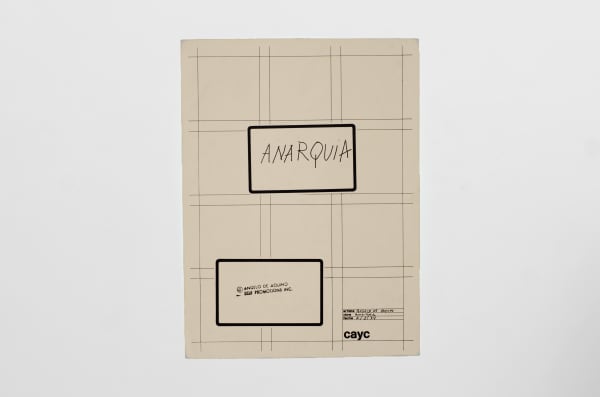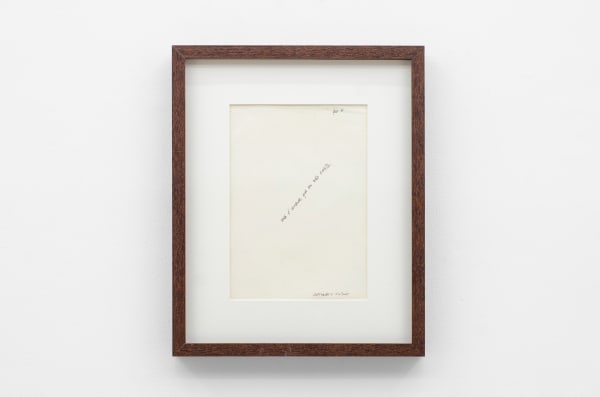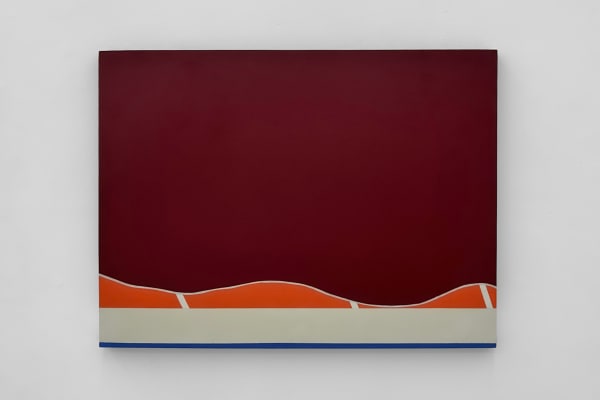Angelo de Aquino: Não é verdade que eu não exista
It’s not True that I don’t Exist
For a young artist emerging in Brazil during the 1960s, there are many ways of dealing with this time period - be it from art or history's point of view. An aesthetic effervescence had already been happening since the previous decade through the constructivist movements in Rio de Janeiro and São Paulo, bearing fruits during the worst period for creative freedom. In the midst of new rising names that expanded information about art in the world and country, we also experienced the first moments of a civil-military dictatorship that would last for almost twenty years.
Angelo de Aquino emerged precisely at this time of simultaneous expansion and repression. At the age of twenty, he took part in a milestone for the history of Brazilian art – the famous Opinion 65 exhibition, held at MAM-Rio (Museum of Modern Art – Rio de Janeiro). His abstract-geometric verve and warm colors point to an artist in his formative years who made use of concrete and neo-concrete visuality. At the same time, it is possible to see his gaze already in contact with the works of pop art and new figurations from around the world. In addition, Angelo is part of a generation that had a strong graphical inclination and saw design in Rio de Janeiro become a closely related field with the creation of the Escola Superior de Desenho Industrial (School of Industrial Design - ESDI).
It was against this backdrop that their aesthetic perspective sought to adjust quickly to the political moment. For those who needed experimentation and criticism as working tools, it was crucial to deal with the impact of the progressive closing of society and the country as a whole. Deprived of these tools, young people like Angelo de Aquino had to make up ways of continuing to be active with their art.
In situations of repression against ideas and behaviors, those who were targeted by this state of affairs ended up taking some of the generation's most striking paths. Among many, one is a radical emptying of the self, of the name that signs, in favor of displacing the ego towards an anonymous collective. Another route is to understand that one of the ways to personally and creatively survive is exile. In this exhibition, we see that Angelo de Aquino exercised both simultaneously.
In the first of these, the emptying of an authorial and existential self, we see an artist whose work dialogues with the global art of his time. If today the affirmation of personal identities is marked in the body and voices that represent political communities, in the period when most of the works in this exhibition were made it was the opposite perspective. In this invitation towards community and participation, the idea of erasing identity was directly linked to the common political enemy. Aquino was a contemporary of conceptual art, the expansion of new media as a fresh artistic material and the “dematerialization of the art object.” In this space-time, he created a series of works in which he both erased faces and transformed the self that enunciates the titles of the pieces into a collective entity.
Firstly, we see his Transformations, a series of photographs in which he erases his face with superimposed layers and materials that block access to what is in front of the camera. There is also the Project for a Change of Identity, in which Angelo becomes Emanuelle. In the second half of the 1970s, this impetus continues with a series of graphic paintings that affirm the place of this “Me,” still in displacement and disappearance: “Me and a mystery,” “Me, an illusion” or “Me through a void” show the tenuous process between the erasure of this ego and its transformation into a blob of color. The “Me” of these canvases asserts itself as a dark blue that takes on moving forms between planes and grids.
Exile was also one of the paths Angelo followed, traveling to Milan and living there between 1970 and 1972. It was a period when artists of his generation were abroad, including Hélio Oiticica and Rubens Gerchman in New York and Antonio Dias and Iole de Freitas in Milan. During this short but fruitful period, Aquino immersed himself in the expansion of media, being one of the pioneers of so-called postcard art, as well as experimenting with photography, video, stamps, photocopies and artists’ books. The creation of a “company” – Angelo de Aquino Self Promotion inc – set the tone for this provocative, and at the same time, questioning approach on the role of art and the artist in the context of the art market.
This dual path between the erasure of ego and exile made Angelo de Aquino a contemporary artist of his era, and at the same time, unique in his choices. After all, even with his return to Brazil and gradual resumption of painting, his work continued to tension the legacy of national abstractionism from the 1950s with investigations about the role of the artist as a political agent in the field of Brazilian art. Erasing his face, scratching out his name, and turning a personal self into a kind of collective self. These were all actions that gave consistency to an ethic created by the artist. In the face of censorship and the silencing devices promoted by the civil-military regime, these works show mature outlets among exercises that are sometimes ironic, sometimes disturbing.
The choice of the title for this exhibition, “It's not true that I don't exist,” is the name of a work from 1970, and therefore the synthesis of what this text points to: an artist who, in a period of disappearances and silences, affirms himself in the negative spaces. Despite the radical displacement of an authorial identity, the erasure of the face, the transformation of media towards the ephemeral and ironic, the artist exists. Exile, another layer of “non-existence,” is the password for another Angelo to emerge and remake himself in a permanent state of self and world invention. May this exhibition update and broaden the public's contact with the work of an artist whose trajectory goes far beyond what is known, and still holds a fundamental political and existential power for thinking about the contemporary Brazilian scene.
Fred Coelho
![Angelo de Aquino Auto-retrato no horizonte e (da série "O Pensamento Abstrato - parte 24"), 1976 Técnica mista sobre papel [Mixed technique on paper] 50 x 70 cm [19 3/4 x 27 1/2 in]](https://artlogic-res.cloudinary.com/w_800,h_800,c_limit,f_auto,fl_lossy,q_auto/artlogicstorage/galeriaathena/images/view/f8262f3211d99c4fd697d8abd1123129j/galeriaathena-angelo-de-aquino-auto-retrato-no-horizonte-e-da-s-rie-o-pensamento-abstrato-parte-24-1976.jpg)

